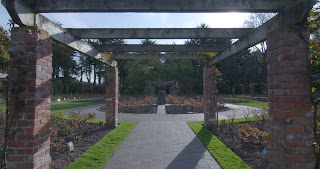So when Callum asked me to mix him up some fake blood for his shoot this weekend I was in just the right place to do it.
I'd got some practice in with fake blood while Art Directing Don's film so I'll be a pro at this soon.
Callum wanted a quite red blood with a bit of depth to it. He gave me this image as a reference:
This is what I mixed up. I think this counts as mission successful!
I combined a couple of different recipes after experimenting on Don's shoot.
For anyone interested this is the process I use, read on.
For this blood I used:
- Liquid Laundry detergent (the one I used was a clear blue colour)
- Red food colouring
- Blue food colouring
- Flour
- Coffee
- Glucose Syrup
I don't use measurements although if you want to be able to replicate it exactly wouldn't be a bad idea to make note of what you use.
The laundry detergent makes a good base since it makes things a lot easier to clean up. It also gives the blood a nice flow from the way the soap kinda drips. Not so watery.
Obviously if you are dealing with blood in the mouth of actors or certain allergies it's better to use a recipe without the detergent.
I added at least 3 tsp of red colouring to a cup of detergent for my starting point. I had leftover Glucose Syrup so there is about a 1/4 C in the nearly 1 litre of blood that I made today. This adds a bit of tackiness to the blood.
There's probably about 4 Tbs of flour in this mix. This is sieved and mixed in which makes the blood more opaque and realistic looking. It also thickens the blood.
The coffee is used to make the blood darker, as is the blue colouring which also adds some realism. Since the detergent I used has a slight blue to it the blood doesn't need much. You have to be really careful with blue colouring since it is really strong stuff. If you put too much in the colour can never be fixed. I don't even add full drops at a time. Instead I use a knife or toothpick to get the tiniest amount of blue at a time to add.
I like to mix in parts- split across different containers so that if too much of something is added I don't lose the lot. This also means I can mix mishaps together in small amounts and sometimes correct the mistakes.
Knowing how the blood will be used is pretty useful- if it's going to be spread thinly it probably needs more flour to add depth. If it needs to slowly drip then more syrup and flour is going to help. You also want it to hold up under the light- so if you know it will be brightly lit it might be worth making the blood darker so it doesn't end up looking orange.
On a final note- it's worth mixing this up a day or two before. Since you are mixing detergent it needs sometime for the bubbles to settle down and also to get rid of any lumps from the flour.
I don't know if I'll ever be needing to make blood again but I feel like I now know I lot about it.
Add it to the knowledge bank!!



















































